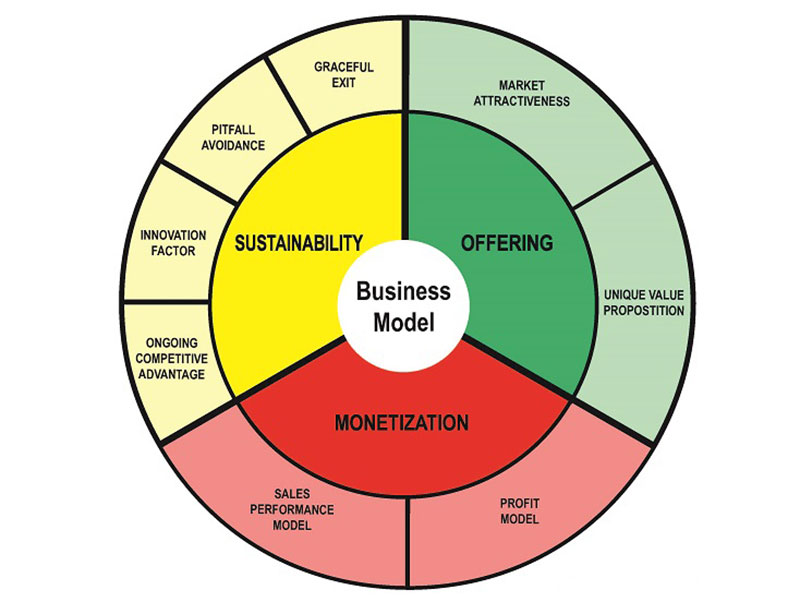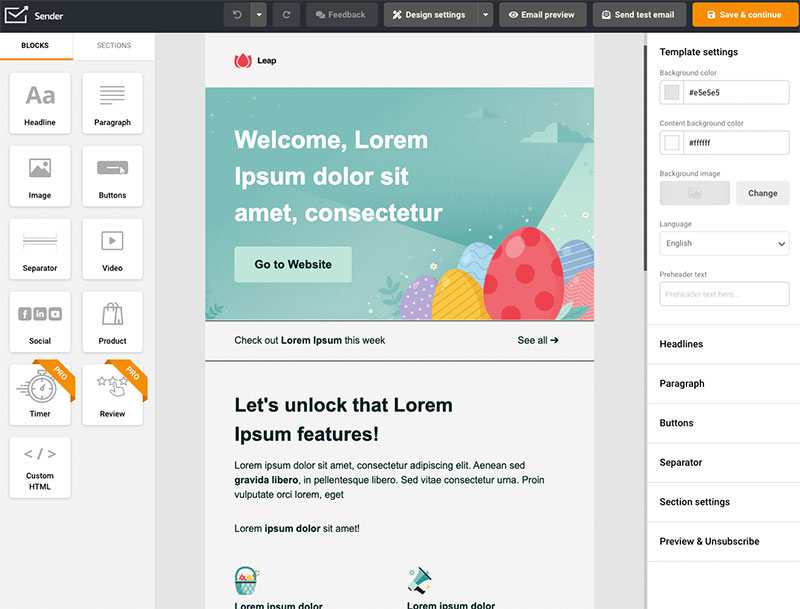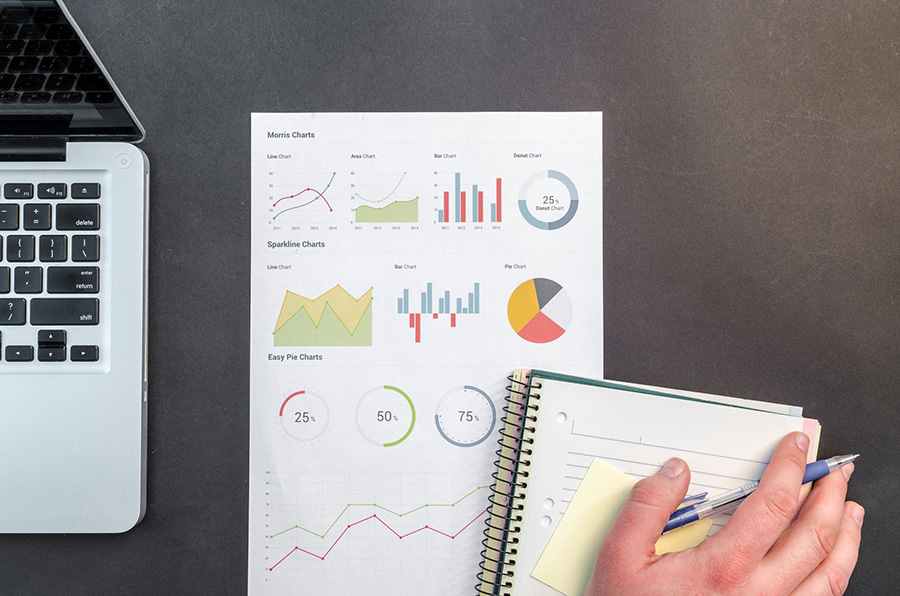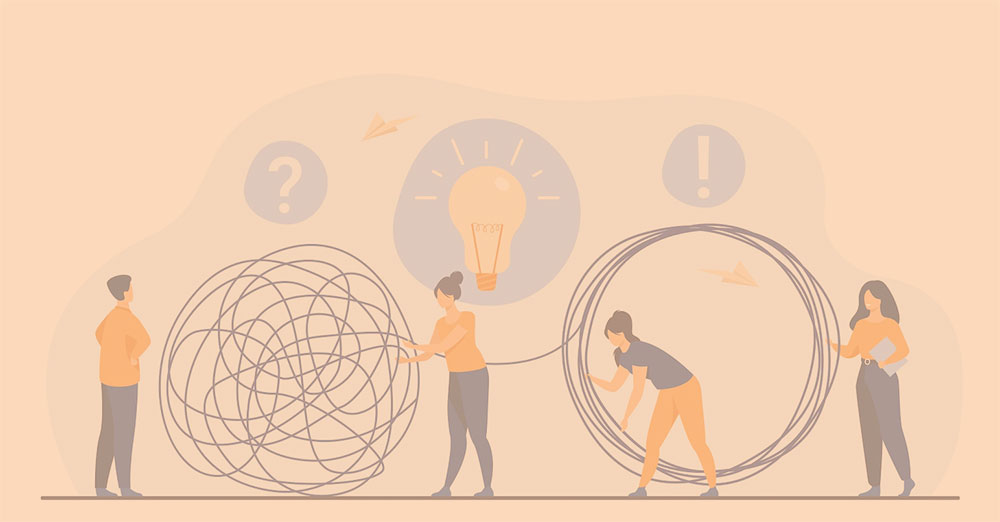If you aspire to be an entrepreneur, that means you already have some ideas in mind. Knowing what the difference is between a business model and a business plan is going to help you. Each has its own use, so understanding them is important.
Any successful business owner will have to do some business planning. There are a lot of benefits to doing this, and the more organized you get, the better it is going to be for you. In the digital era, you don’t have to do it on paper – you can do it much more efficiently using IdeaBuddy, for example, but the better you understand the essence, the higher your chance of building a successful plan you have.
The differences between business model vs business plan
| Aspect | Business Model | Business Plan |
|---|---|---|
| Definition | A framework for creating economic value and capturing a portion of that value. | A formal document detailing a business’s objectives, strategies, target market, and financial forecasts. |
| Purpose | To define how a company creates, delivers, and captures value in economic, social, cultural, or other contexts. | To guide management in running the business and to persuade external parties, like investors, to fund the business. |
| Components | – Value proposition – Customer segments – Channels – Revenue streams – Cost structure | – Executive summary – Market analysis – Organization and management plan – Sales strategies – Financial projections |
| Flexibility | Typically more flexible, subject to adjustment as the company grows or market conditions change. | Tends to be a more rigid document, often used for a specific purpose, like seeking investment or a bank loan. |
| Audience | Primarily internal; used by founders and management to understand and operate the business. | Both internal management and external stakeholders, including investors, banks, and potential partners. |
The business model is the foundation of a company, while the business plan is the structure. So, a business model is the main idea of the business together with the description of how it is working.
The business plan goes into detail to show how this idea could work. A business model can also be considered the mechanism that a company has to generate profits. At the same time, the business plan also does its part in being the way a company can present its strategy. It is also used to show the financial performance that is expected for the near future.
Comparing how business models and business plans work to help you in different ways is important. A business model can help you be sure that the company is making money. It helps to identify services that customers value. It also shows the reciprocation of funds for the activity that a business renders to its customers.
Any business can have different ways of generating income, but the goals of the business model should aim to simplify the money process. It does this by focusing on the large income generators.
So, we now understood that a basic business model is a gateway to show how an organization is functioning. A business plan is a document that shows the strategy of an organization together with the expected performance details.
We can find the details of a company when we check its business plan. What it does is offer more info about the business model. It does this by explaining the teams needed to meet the demand of the business model. It explains the equipment needed, as well as resources that need to be obtained to start creating. Explaining the marketing goals, and how the business is going to attract and retain more customers over the competition, will be part of the model.
Another interesting thing when it comes to comparing business models and business plans is that they cannot function without each other. Just remember this, the business model is going to be the center of the business plan.
Business plan
When comparing using a business model versus a business plan, we also need to understand each one better to draw some final conclusions. One of the first goals of a company could be to define its business model.
The business plan is going to be the detailed part that includes all the information and steps like Mayple’s marketing plan template, organization, products or services, sales plan, business proposal for investors, and so on. Some useful questions that you can use when developing your business plan are:
- What do we have now?
- What do we want to have in the future?
- What do we need in order to be there?
Business Model

The business model is a structure that a company uses to build its value. It simplifies the organization down to the essence and helps in achieving success or managing any kind of challenges that can appear.
In simple terms, business models and business plans are connected. A business model is a way you make money. Maybe you are selling products, or maybe you are selling services. In the end, what you are doing is adding some value and selling it for a certain price. The goal behind this is to obtain a profit from the sale of that particular product or service.
Any business model has these elements:
- The business concept is given by the opportunity you attack. It usually has the ideal customer described, the added benefits that your product or service brings, the product or service, and how you are going to get them to the end consumer.
- The value chain position refers to the activities that need to be done to get from you to the end user.
- The customer value is an estimate of the benefits that your customers receive when they purchase your service or product.
- The revenue sources together with the cost drivers that are showing all the activity’s costs.
- The competitive advantage shows the state when a customer is perceiving your products or services as better than the competition.
Business Models Examples
Understanding what business models and business plans have in common means that we need to see some examples. Every company should have a document that shows how they are approaching customers and what real value they bring.
This is why seeing some business models can be a good thing to understand them better. See the business model strategy that can be used by different companies in the following.
The business model of production
This is one of the simplest models. It relates to the idea that the company sells the products and the services it produces. The company must make enough sales in order to cover all its costs.
Advertising
This is another old business model that has been used for quite some time. The basis of this model focuses on creating content that people want to check and then displaying it in front of them.
You can do it in many ways, however, we highly recommend trying one of the most popular marketing channels – email marketing. Shockingly, it has the highest ROI of all marketing strategies, especially if you use a powerful and affordable email software like SendGrid or Sender.

Multilevel marketing
Recommendations are some of the most powerful sales performers. They work great with products that need recommendation in order to be sold.
A business model based on commission (or distribution):
The company becomes the middle man between a seller and a buyer. It works by getting a cut of every sale that it helps generate. This business model does not have many risks, so, therefore, it is also less profitable.
Razor and blades
This business model focuses on products that need to be replaced often. From razors to paper, and so on. In general, we are talking about products that are sold at a very high markup.
Affiliate
This affiliate business model relates to the advertising model. It has some differences and is used mainly online. It uses links that are embedded in content forms that act as advertising visuals. There’s a reason that many experienced SEO consultants have a side project that uses the affiliate model.
Franchise
Another old and popular business model is the franchise model. You can sell the right to use your business model in exchange for some percentage of the revenues. Some of the popular entities for the franchise are: C Corporation, S Corporation, Limited Liability Company (LLC), and Sole Proprietorship. One thing in the case of LLCs is that you must pay a franchise tax and the amount of tax depends on the state where it is formed. If you have LLC in Texas, you need to pay 0.75 percent of the business’s total gross revenue whereas LLC in California must pay an annual tax of $800.
FAQs about business model vs business plan
1. What is the difference between a business model and a business plan?
A business plan is a comprehensive road map that shows how a firm expects to accomplish its goals, whereas a business model is a conceptual framework that outlines how a company makes income.
A business plan gives the specifics, whereas a business model outlines the overarching strategy.
2. How does a business model differ from a business strategy?
A business strategy is a plan for how a firm will accomplish its ultimate goals, whereas a business model is a plan for how a company will produce money.
A business strategy focuses on competitive advantage, differentiation, and market position, whereas a business model focuses on revenue generation and value proposition.
3. Why is it important to have a well-defined business model before creating a business plan?
A solid business model serves as a framework for the creation of a company strategy, thus having one is crucial. A business model explains how a company will create value and make money, which is crucial knowledge for creating a strategy to accomplish those objectives.
4. Can a business model change without changing the business plan?
The answer is that a business model can change without the business plan altering. A business model is a theoretical framework that can be modified to reflect shifting market conditions or corporate goals.
To make sure that the company’s objectives are still attainable, however, modifying the business model could need altering the business strategy.
5. What are the key components of a business model?
A value proposition, customer segmentation, channels, customer relationships, income streams, key resources, key activities, key partnerships, and cost structure are the essential elements of a business model. These components outline how a business creates, delivers, and generates value for its clients.
6. How does a business plan help a company execute its business model?
The business model of a corporation can be carried out according to a plan. It details the precise actions the business will take to accomplish its objectives, including marketing and sales strategies, monetary forecasts, and operational plans.
A business plan assists a company in staying on track and making wise decisions by offering a comprehensive blueprint.
7. Can a startup have a solid business model without a detailed business plan?
Absolutely, a startup can succeed without having a thorough business plan. But a thorough business plan can serve as a guide for carrying out that model and assist the business to avoid frequent mistakes.
However, enlisting the expertise of business plan consulting professionals can provide invaluable insights and strategic analysis, enhancing the effectiveness of the model and helping the business navigate potential pitfalls with confidence. A well-crafted business plan can be a powerful tool in steering the startup toward long-term success and sustainable growth.
A thorough plan may be necessary to obtain financing from lenders or investors.
8. How often should a company review and update its business model and business plan?
Since market conditions and corporate goals are subject to change over time, a firm should frequently review and update its business model and business plan.
A business should typically assess its strategy and model at least once every year and make any revisions.
9. How does a business model affect a company’s profitability?
The profitability of a corporation can be positively impacted by a well-designed business model that maximizes revenue while reducing expenditures.
A business model that is in line with the objectives of the organization, client demands, and market circumstances can give the business a competitive edge and boost profitability.
10. How can a company test and validate its business model before creating a business plan?
By conducting market research, conducting consumer discovery interviews, developing prototypes, and reviewing customer feedback, a business can test and validate its business model.
A business can make sure it is putting its resources in a workable and profitable concept by testing the business model’s viability before creating a comprehensive plan.
Ending thoughts on business model vs business plan
In conclusion, business models and business plans are subjects that any entrepreneur should consider and take the time to understand. They both help a business to grow. Using the right one means that your company can have a clearer process and better products and services.
If you enjoyed reading this article on business model vs business plan, you should check out this one about Steve Jobs leadership style.
We also wrote about a few related subjects like accelerator vs incubator, startup funding stages, how to value a startup, IPO process, IPO lockup period, risk assessment matrix, business process modelling and business model innovation.
- Business model vs business plan: What’s the difference between them - February 6, 2024
- What Is A Project Management Framework? (Must Read) - October 15, 2023
- What is an IT Project Manager and What Do They Do? - October 11, 2023









